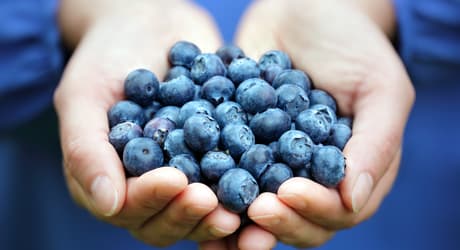Get in touch
Our automation works smarter, wastes less, and optimizes your lines to ensure quality is consistent and potential recalls are a thing of the past.
Speak with us to learn how you can make Every Resource Count!™

Demand for fresh blueberries more than doubled in the last decade and is expected to keep on climbing in the foreseeable future at a compound annual growth rate of about 7%. One reason for this exceptional growth is the heightened popularity of healthy foods in many nations around the world. Another reason is the transformation of blueberries from a seasonal product to one that’s sold all year round.
Nobody could have imagined this when a U.S. cranberry farmer first began cultivating wild highbush blueberries in New Jersey in 1908, before selling the first commercial crop eight years later. From these humble beginnings, North America became the fruit’s biggest grower - but now other classes of the blueberry plant are being grown commercially and other nations are growing blueberries in great quantities. The number of countries producing more than 10,000 tons of blueberries annually has increased since 2010 from four to eleven. The U.S. still produces the greatest volume, followed by Canada; however, China will soon be the number one domestic producer of blueberries.

Now that the availability of blueberries is expected, consumers are becoming more discerning about quality. Many now look for preferred blueberry brand names and countries of origin – and they resist buying from labels that have disappointed them. This is more than just a commodity: retailers are selling an eating experience, and it falls on growers and packhouses to provide satisfactory products.
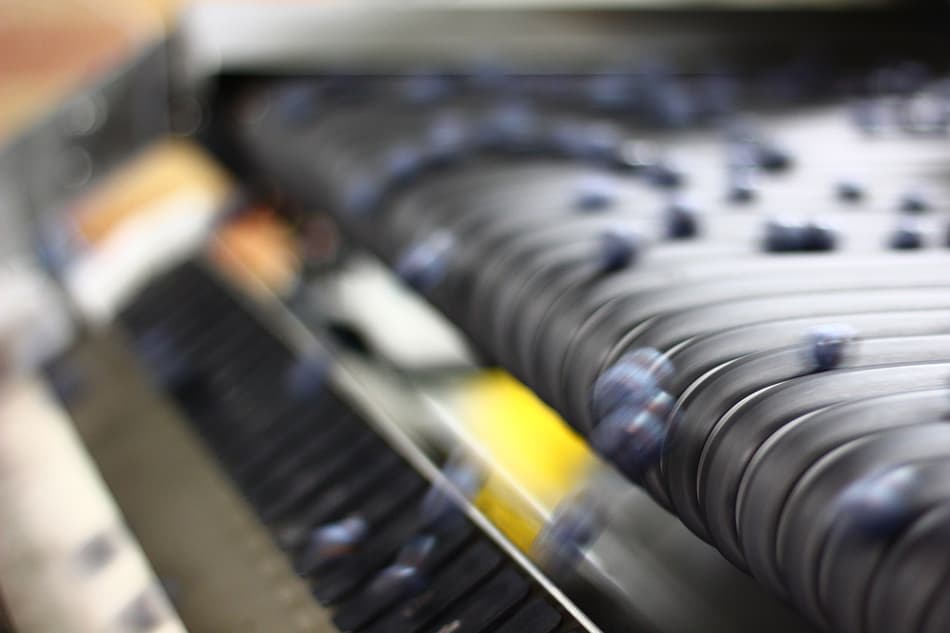
In the quest for higher quality fruit, significant investments are being made in cultivar research. Food science is leading to blueberries that are larger, firmer, sweeter and tastier. And cultivar developers are seeking the holy grail: blueberries with a longer shelf life so more fruit arrives at export destinations in perfect condition despite spending weeks in shipping.
Quantity and quality are targets that once pulled in opposite directions. Higher throughputs at packhouses tended to imply lower product quality. Greater quality tended to require slower sorting and grading speeds and lower throughputs. But this, too, has changed. And the game-changer is technology. Today’s state-of-the-art sorting, grading, and packing solutions can boost packhouse efficiencies by making the previously impossible possible.
The world-leading manufacturer of optical inspecting, sorting and grading machines for the food industry is TOMRA Food. TOMRA is also the only integrated line provider for blueberries, offering solutions for all varieties of blueberries, fresh to frozen, and handling everything from tipping the fruit onto the line to sorting, grading, and packing. In addition to sorting by size, color, softness, bruising, decay, dehydration, stems, peeling, and scarring, TOMRA also offers artificial intelligence for increased grading superiority across calyx, stem hole, and advanced defect detection.
TOMRA Food’s blueberry solutions are scalable, making them suitable for businesses of all sizes, from small family-owned farms to multinational corporations. And because these solutions are modular, packhouse lines can grow as the business grows.
One reason for the effectiveness of TOMRA’s packhouse solutions is the company’s longstanding culture of innovation through a commitment to research and development. This includes an in-house Fruit Science Program, run from the company’s Field Research Centre in Waikato, New Zealand. This boasts a production design facility, cool storage, a facility for full test simulations, engineering space, and fruit science test labs.
Another reason is TOMRA’s acquisition of BBC Technologies, which originated when blueberry growers in New Zealand invented a grader and sorter that they commercialized and sold to other growers. This led to world-class expertise in precision sorting and grading systems, and punnet and clamshell filling solutions, for blueberries and other small fruits.
Yet another reason is that TOMRA’s engineers have acquired a deep understanding of packhouses’ operational challenges by working closely with their customers for over two decades. This working relationship is further enhanced by the fact that TOMRA is a direct-to- market provider. There’s no ‘middle-man’ to dilute the feedback from packhouses, slow things down, or add another cost layer.
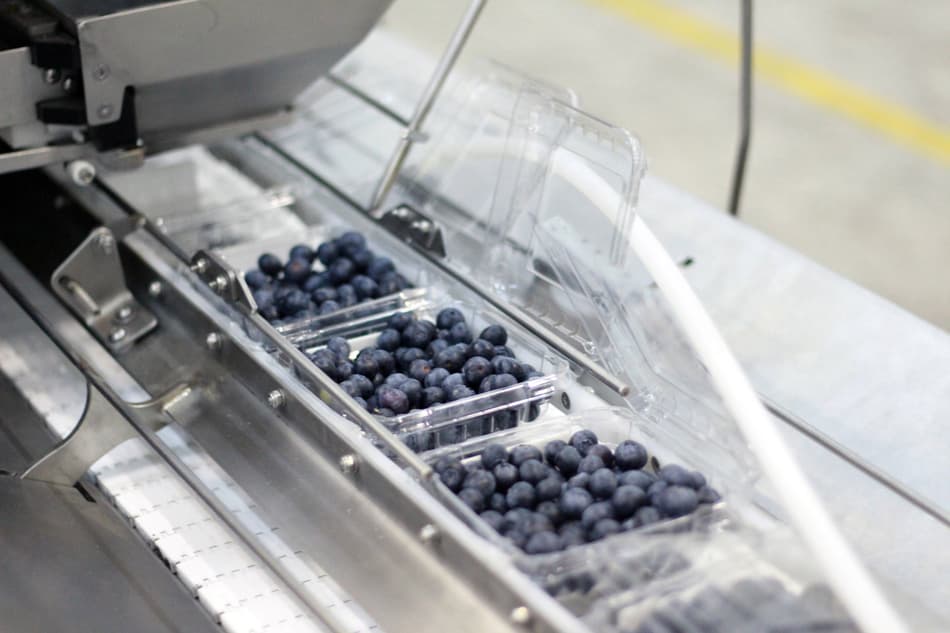
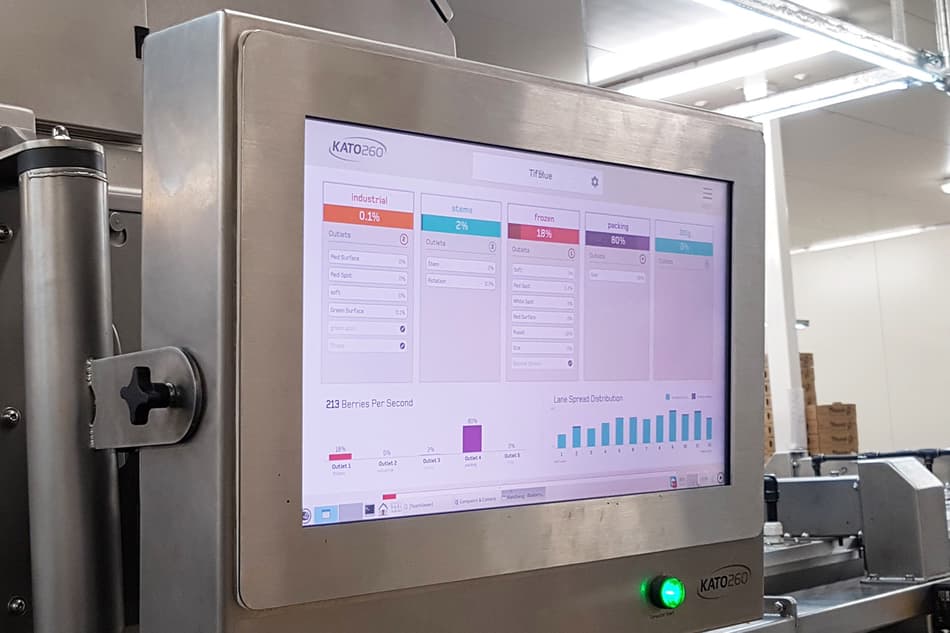
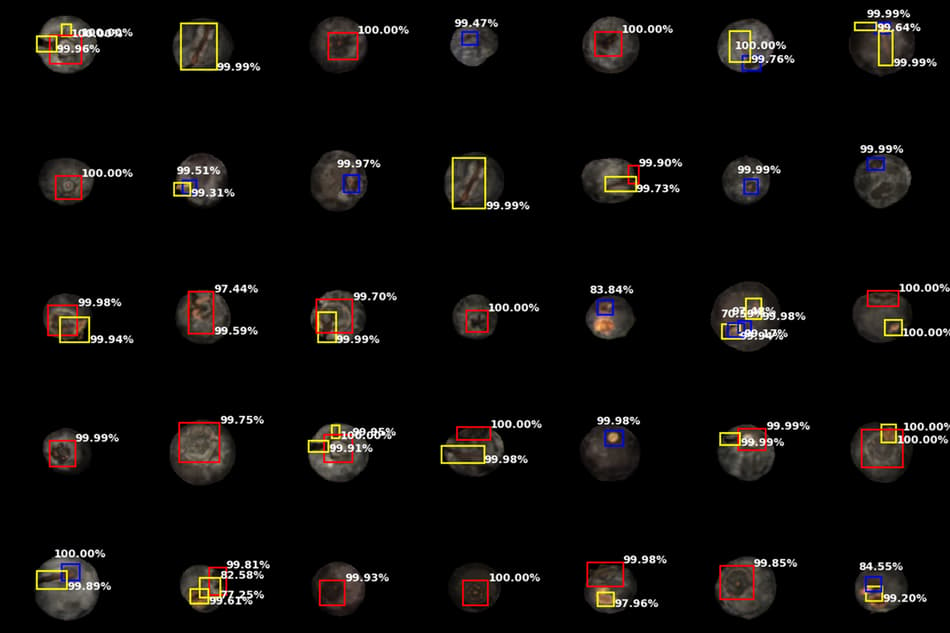
The industry-leading precision sorting and grading system for blueberries is the KATO 260. Compact, to minimize floor-space requirements, and designed to handle the fruit gently to maximize bloom retention and shelf life, this versatile system is suitable for any fruit sorting condition. Whether sizing fruit into numerous bands or removing defective fruit, the KATO 260 provides five or seven outlets for seamless sorting in any size packing facility.
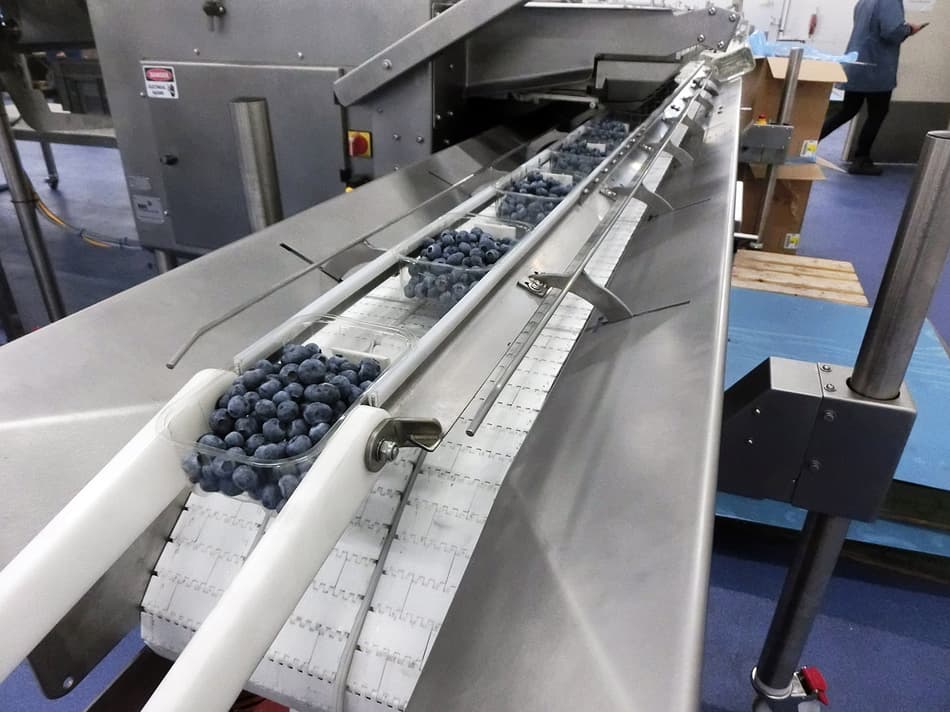
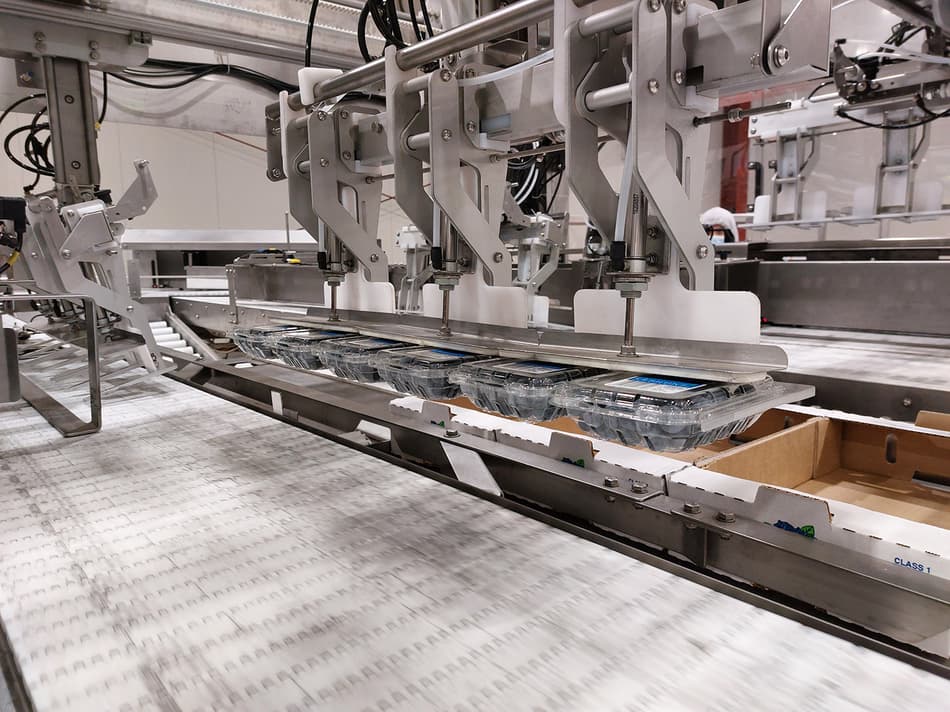
To learn more about the TOMRA Food blueberry solution please visit our blueberries page
How modern grading and packing solutions enable blueberry packhouses to gain and retain competitiveness
2.55 Mb

